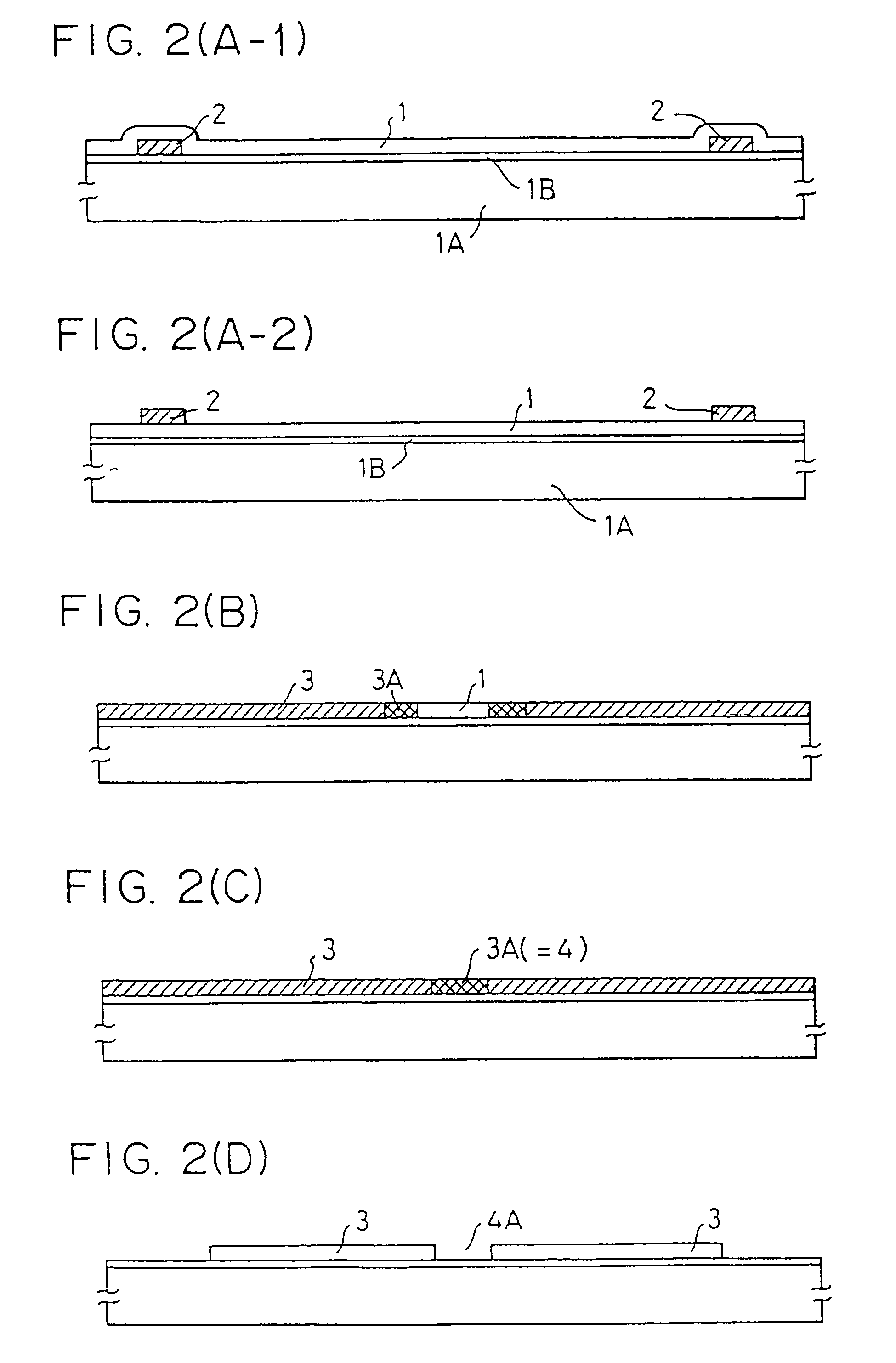Method for manufacturing a thin film transistor device
a thin film transistor and manufacturing method technology, applied in semiconductor devices, instruments, electrical devices, etc., can solve the problems of epitaxial crystallization in solid phase, which cannot solve the problem of epitaxial crystallization under 600° c. of temperature, and the concept of epitaxial crystallization cannot be applied. achieve good crystallinity, low leakage current, and high mobility
- Summary
- Abstract
- Description
- Claims
- Application Information
AI Technical Summary
Benefits of technology
Problems solved by technology
Method used
Image
Examples
first embodiment
[0071]A method for fabricating a TFT using a crystal silicon film obtained by crystallizing an amorphous silicon film using a plurality of island nickel films formed on Corning 7059 glass substrate as starting points will be described in the present embodiment. There are two methods for forming the island nickel films depending on whether it is formed on or under the amorphous silicon film. FIG. 2(A-1) shows the method wherein it is formed under the film and FIG. 2(A-2) shows the method wherein it is formed on the film. What must be careful especially about the later is that because nickel is selectively etched after forming it on the whole surface of the amorphous silicon film in the process, nickel and amorphous silicon react each other and produce nickel silicide, though it is a small amount. Because a good crystalline silicon film which the present invention aims for cannot be obtained if this nickel silicide remains as it is, it is necessary to remove this nickel silicide fully...
second embodiment
[0090]FIG. 5 shows a case when a TFT for an aluminum gate was fabricated similarly to that shown in FIG. 4. However, the amorphous silicon was used as an active layer in this embodiment: As shown in FIG. 5(A), a ground silicon oxide film 32 was deposited on a substrate 31 and an amorphous silicon film 33 with a thickness of 2000 to 3000 angstrom was deposited further on that. An adequate amount of P type or N type impurities may be mixed in the amorphous silicon film. Then island nickel or nickel silicide coating film 34A and 34B were formed as described above and the amorphous silicon film was crystallized by growing laterally by annealing for 8 hours at 550° C. or for four hours at 600° C. in this state.
[0091]Then a crystal silicon film thus obtained was patterned as shown in FIG. 5(B). At this time, because the silicon film contained a large amount of nickel in the middle in the figure (the intermediate portion between the nickel or nickel silicide film 34A and 34B), the patterni...
third embodiment
[0094]FIG. 6 shows a process when a CMOS type TFT was fabricated. As shown in FIG. 6(A), a ground silicon oxide film 52 was deposited on a substrate 51 and an amorphous silicon film 53 with a thickness of 1000 to 1500 angstrom was deposited further on that. Then as described above, island nickel or nickel silicide coating film 54 was formed and annealing was implemented in this state at 550° C. A silicon silicide region 55 moved in the direction of plane, not in the direction of thickness, of the coating film and the crystallization advances by this process. The amorphous silicon film changed into crystal silicon as shown in FIG. 6(B) by four hours of annealing. The silicon silicide regions 59A and 59B were driven away toward the edge along the advancement of the crystallization.
[0095]Then an island silicon region 56 was formed by patterning the crystal silicon film thus obtained as shown in FIG. 6(B) Here, an attention must be paid on that nickel was highly concentrated in the both...
PUM
| Property | Measurement | Unit |
|---|---|---|
| temperature | aaaaa | aaaaa |
| time | aaaaa | aaaaa |
| strain point | aaaaa | aaaaa |
Abstract
Description
Claims
Application Information
 Login to View More
Login to View More - R&D
- Intellectual Property
- Life Sciences
- Materials
- Tech Scout
- Unparalleled Data Quality
- Higher Quality Content
- 60% Fewer Hallucinations
Browse by: Latest US Patents, China's latest patents, Technical Efficacy Thesaurus, Application Domain, Technology Topic, Popular Technical Reports.
© 2025 PatSnap. All rights reserved.Legal|Privacy policy|Modern Slavery Act Transparency Statement|Sitemap|About US| Contact US: help@patsnap.com



